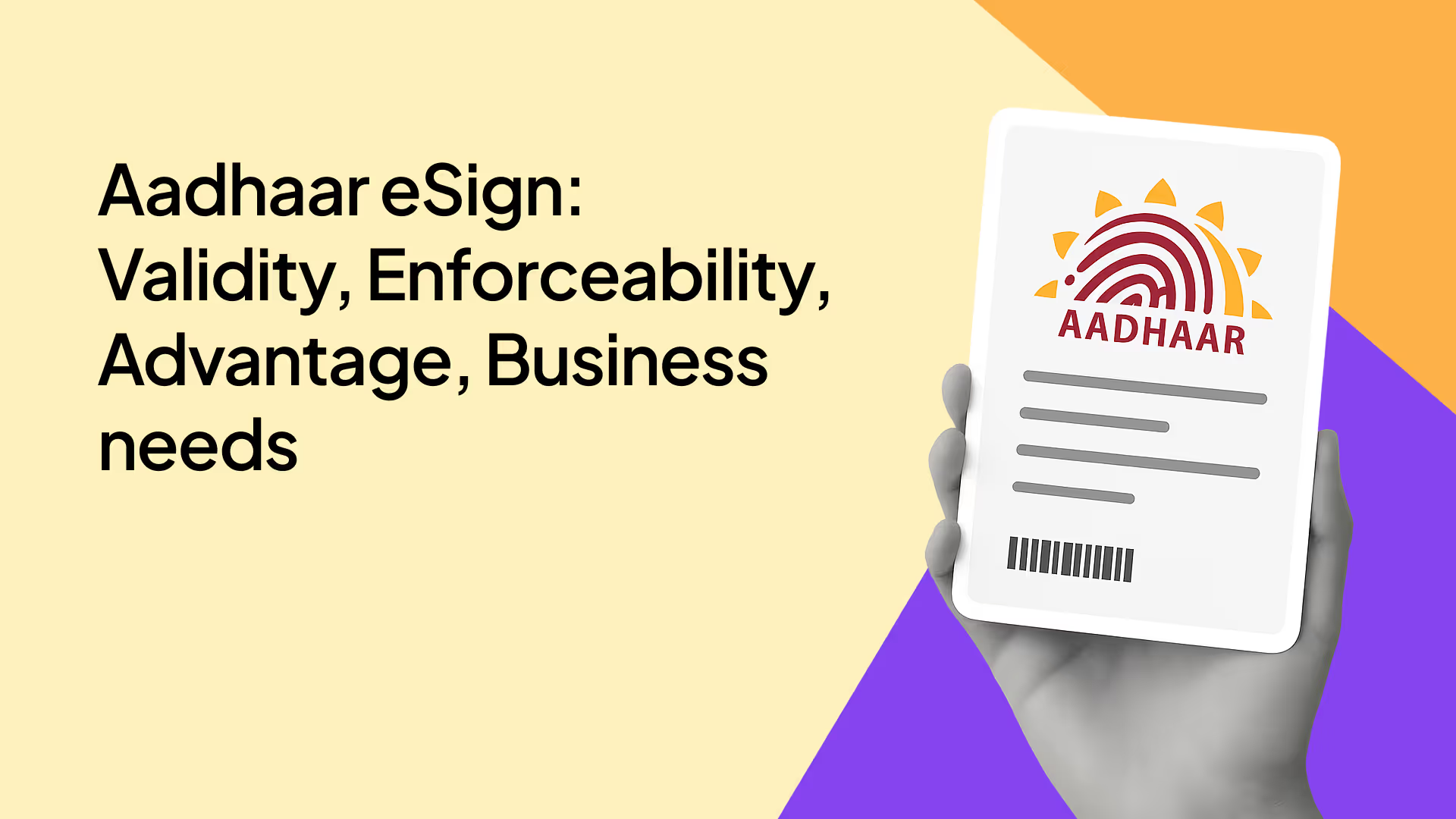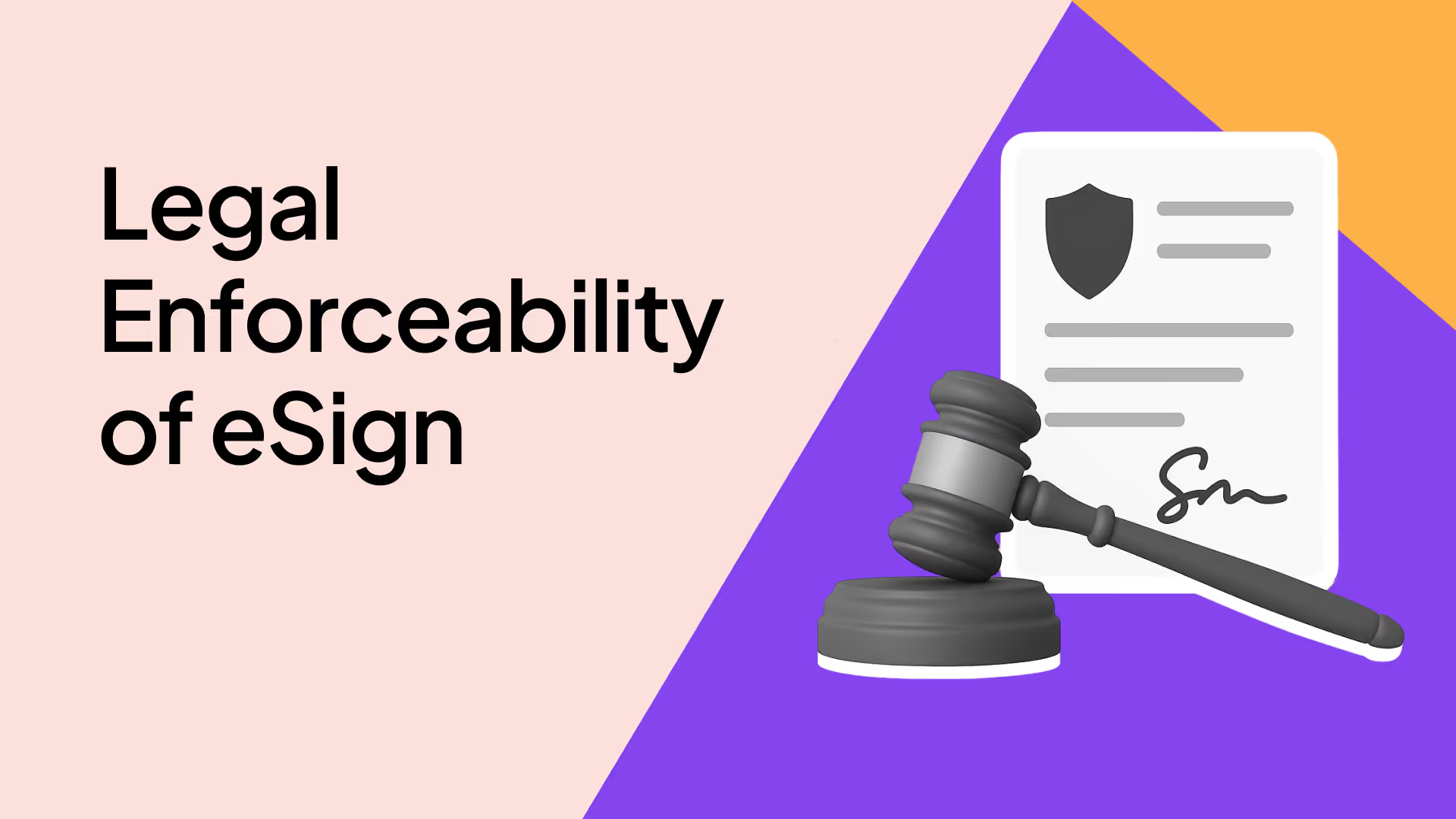While almost all types of documents can be legally executed using any mode of acceptance - eSign, virtual Sign, email etc - there are narrow exceptions to this rule. Let’s see what they are.
1. First Schedule of the IT Act, 2000
The IT Act is an enabling legislation that holds the field when it comes to electronic signatures. This means that if the IT Act says a particular electronic signing type is valid - then you can use that signing type to eSign any type of document (subject to the conditions laid down in the IT Act): : WITHOUT the need of any subsequent law or regulation
The IT Act accords validity to electronically sign virtually ALL types of documents. However, the First Schedule to the Act carves out some narrow exceptions.
The First Schedule of the IT Act prescribes 5 types of documents to which the IT Act would not apply:
(a) Negotiable instruments (other than a cheque, a Demand Promissory Note or a Bill of Exchange issued in favour of or endorsed by an entity regulated by the RBI, NHB, SEBI, IRDAI and PFRDA)
(b) Powers-of-attorney but excluding those power-of-attorney that empower an entity regulated by the RBI, NHB, SEBI, IRDAI and PFRDA to act for, on behalf of, and in the name of the person executing them
(c) Documents that create trusts
(d) Wills and other testamentary depositions
It is important to note that the First Schedule does not bar or prohibit electronic signing types for the 4 documents mentioned above. It merely says that, by default, you cannot use electronic signing methods for the above 4 types of documents. You would need a subsequent enabling law or regulation in order to be able to electronically sign these documents.
2. Section 5 of the IT Act
Section 5 of the Information Technology Act grants electronic signatures identical validity to wet-ink signatures.

That is - an “electronic signature” is seen as legally identical to a wet-ink physical signature - even if its form and design may be different.
A necessary implication of Section 5 is also that - where any law requires that anything needs to be authenticated via a “signature” - this can be done digitally only via an electronic signature. In other words, suppose a law or regulation prescribes that a particular type of document must mandatorily contain a signature of a party (note: the actual words “signature” or any adjunct version of that word must be used). Under Section 5 of the IT Act, an electronic execution of such a document is only possible with an IT Act recognised electronic signature such as Aadhaar eSign or DSC Tokens.
Examples of documents which are required to be mandatorily signed under law:
- The agreement that a card issuing company and a card holder now need to execute between them, pursuant to the 2022 RBI master direction on credit and debit cards
- Copyright assignment deed - which are required to be signed under Section 19 of The Copyright Act, 1957
The Matrix of Validity
To make your life easier - we’ve prepared a matrix of validity for easy identification of the various types of electronic signing you can legally use for a particular document:
Let’s say you or your organization needs to execute a particular type of document on a regular basis. You’re sick of paper agreements and you want a change. Now you want to know the various ways in which you can electronically sign your documents. The first thing you need to do is look at “Column A” - and identify what type of document it is - and then look at Columns B and C to see which particular signing type is legally permitted for that type of document.
Let’s take an example to understand this better.
Imagine you are the business head of a bank looking to digitise the educational loan agreements that you sign with your customers.
The first check you need to do is see whether your document, the educational loan agreement, is required under any law, rule or regulation to be mandatorily signed. There is no such requirement.
The second check you need to do is see whether it falls under any of the documents listed in the First Schedule of the IT Act. It doesn’t.
Therefore, an educational loan agreement falls under the third category of documents listed above - a document that doesn’t need to be mandatorily signed AND isn’t listed in the First Schedule of the IT Act. Therefore, as you can see in the Matrix of Validity, you can use electronic signatures such as Aadhaar eSign or other electronic modes of execution such as Virtual Signatures to execute it.




